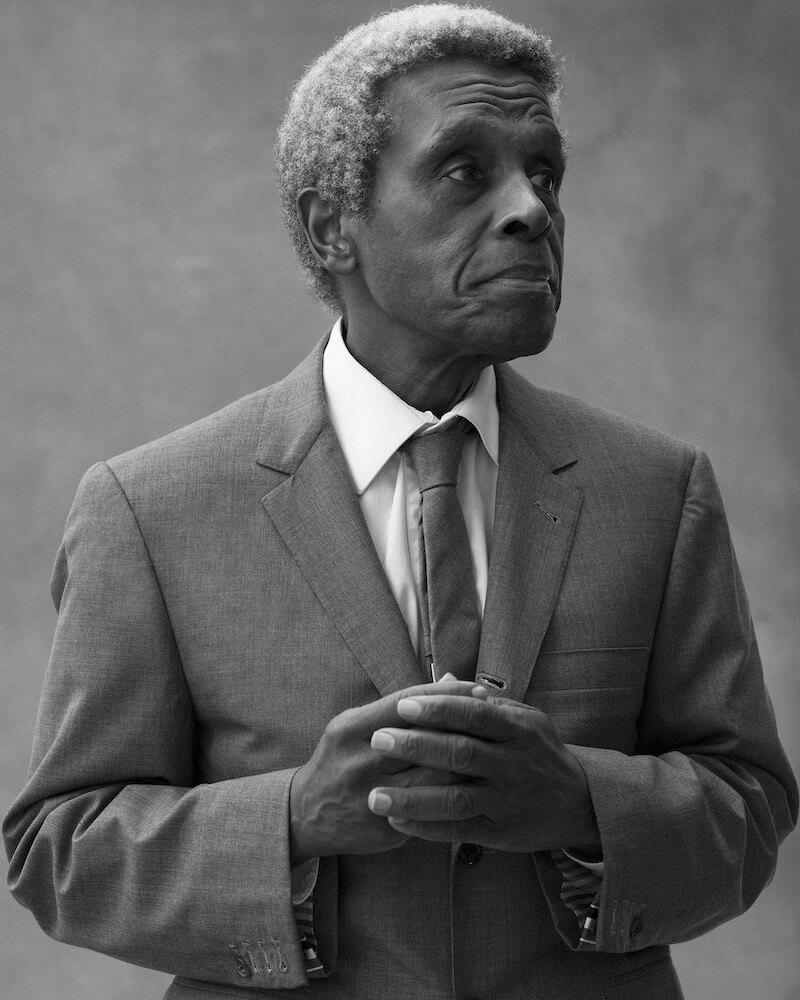
Kwame Brathwaite
2022 Honoree / Achievement in Portraiture
Inspired in part by the writings of Marcus Garvey and the teachings of Carlos Cooks, Kwame Brathwaite’s photography created the visual overture for the Black is Beautiful Movement in the late 50’s and early 60’s. Brathwaite spread this idea through his writings and photographs, as well as the activities of the two organizations they helped co-found: AJASS (1956) and the Grandassa Models (1962).
In the late 1950’s Brathwaite and AJASS became active in the African Nationalist Pioneer Movement (ANPM) led by Carlos Cooks. They were also involved in the early struggle for liberation in Southern Africa. In 1961 they formed the Bronx-based South-West Africa Relief Committee to support Sam Nujoma’s South-West Africa People’s Organization (SWAPO) [and later, the People’s Liberation Army of Namibia (PLAN)]. Parallel to these political activities AJASS was regularly producing concerts at such venues as Club 845 in the Bronx and Small’s Paradise in Harlem. Brathwaite took on the role of photographing these concerts, promoting them, and organizing the cultural activities that would often be held during the concerts, such as art shows, poetry, theater and African dance performances.
AJASS’s first fashion show, “Naturally ’62: The Original African Coiffure and Fashion Extravaganza Designed to Restore Our Racial Pride and Standards,” was headlined by Abbey Lincoln and Max Roach. Initially planned as a one- time event at the Purple Manor in Harlem the evening of January 28, 1962, “Naturally ’62” proved so popular that a second sold out show was held that same night to accommodate the crowd. Tanisha Ford notes in her book, Liberated Threads Black Women, Style and the Global Politics of Soul (Chapel Hill, NC: UNC Press Books, 2015), that, “By wearing African- inspired garments,” the Grandassa Models “were communicating their support of a liberated Africa and symbolically expressing their hope for black freedom and social, political and cultural independence in the Americas.” Brathwaite worked to disrupt media and produce positive images of African-Americans. Working as an artist and a theorist, Brathwaite produced photographs that were specifically intended to shape the course of American visual discourse. Brathwaite ‘s photographs foreground the idea that artistic and political vision can affect change in popular culture — and that popular culture can affect change on culture at large.
The subjects of Brathwaite’s carefully crafted photographs invoke the power of a range of objects, such as books, musical instruments and artworks. The dress and hairstyles of his subjects point to their sense of themselves, while the environs of his subjects direct the viewer to a community of artist activists—writers, painters, playwrights, fashion designers and musicians. Brathwaite’s work demonstrates the power of photography as an essential cultural tool in the dissemination of new political ideas, its power to stage visual rhetoric and its ability to make language visible.
Grandassa Models graced album covers for various Blue Note Records artists such as Lou Donaldson (“The Natural Soul,” 1962) and Freddie Roach (“Brown Sugar,” 1964). These covers and their titles marked a departure from traditional record covers featuring the artists alone, and signified that the visual rhetoric the Grandassa Models represented was being embraced and celebrated. One artist-activist who appears in Brathwaite’s photographs is Carolee Prince, who was one of the era’s most innovative designers of jewelry, headpieces, and clothing for the Grandassa Models. Vocalist Nina Simone was one of her clients, and Prince created many of the headpieces Simone wore at her performances. Grandassa Models made their own clothes and used the shows as an organic way to display their craft and create opportunities to design for others. The “Black is Beautiful” movement opened economic opportunities for the African-American community as they embraced their creativity and entrepreneurial spirit, starting their own fashion related businesses and boutiques. The movement also created a demand for magazines such as Essence (first published in 1970), which were established to represent women previously overlooked in fashion, art, and couture.
Throughout the 60s Kwame Brathwaite produced reporting and pictorials for leading black publications such as The Amsterdam News, City Sun and The Daily Challenge. By the 70’s, Brathwaite was one of the top concert photographers, shaping the images of such public figures as Stevie Wonder, Bob Marley, James Brown and Muhammad Ali. Brathwaite wrote about and photographed such landmark events as the “The Motown Revue” at the Apollo (1963); “WattStax ’72” (1972); The Jackson 5’s first trip to Africa (1974); and the “Festival in Zaire” (1974) which accompanied the famous Foreman-Ali fight, “The Rumble in the Jungle.”
Kwame Brathwaite was born in Brooklyn and lived in the Bronx during his early years. He retired in 2018 and lives in New York with Sikolo Brathwaite, his wife and muse.
Website: kwamebrathwaite.com
Photo by Cory Rice
